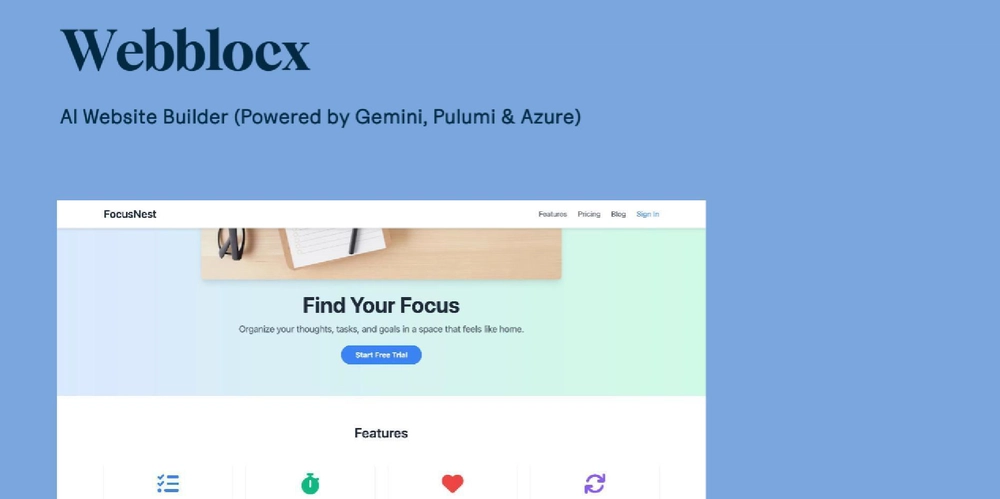Deploying a React App with Docker using Nginx
Containerizing a React application with Docker simplifies deployment and ensures consistency across environments. This guide demonstrates how to create a lightweight Docker image for a React app using a multi-stage build process with Node.js and Nginx. Dockerfile Breakdown # Build stage FROM node:alpine AS builder WORKDIR /app COPY package.json package-lock.json ./ RUN npm install --frozen-lockfile COPY . . RUN npm run build # Run stage FROM nginx:alpine COPY --from=builder /app/build /usr/share/nginx/html RUN echo 'server { listen 80; server_name _; root /usr/share/nginx/html; index index.html; location / { try_files $uri $uri/ /index.html; } }' > /etc/nginx/conf.d/default.conf EXPOSE 80 CMD ["nginx", "-g", "daemon off;"] Stage 1: Building the React App Base Image: Uses node:alpine for a minimal Node.js environment. Working Directory: Sets /app as the working directory. Dependency Installation: Copies package.json and package-lock.json, then installs dependencies using npm install. Copy Source Code: Copies the entire React project. Build Application: Runs npm run build to generate production-ready files in the build/ directory. Stage 2: Running with Nginx Base Image: Uses nginx:alpine for a lightweight production server. Copy Build Artifacts: Moves the build/ directory to Nginx’s web root. Custom Nginx Configuration: Sets up a default configuration to serve the React app and handle routing. Expose Port: Opens port 80, which is the default for Nginx. Start Server: Runs Nginx in the foreground. Why Use Nginx? Nginx is optimized for serving static files and acts as a reverse proxy, improving performance and security. It efficiently handles requests, caches content, and ensures smooth routing for React applications deployed in production environments. Building and Running the Docker Container Step 1: Build the Docker Image Run the following command to build the Docker image: docker build -t react-app . Step 2: Run the Container Start the container and expose it on port 80: docker run -p 80:80 react-app Conclusion This approach provides an efficient way to package and serve a React app using Docker and Nginx. By leveraging multi-stage builds, we keep the final image small and optimized for production environments.

Containerizing a React application with Docker simplifies deployment and ensures consistency across environments. This guide demonstrates how to create a lightweight Docker image for a React app using a multi-stage build process with Node.js and Nginx.
Dockerfile Breakdown
# Build stage
FROM node:alpine AS builder
WORKDIR /app
COPY package.json package-lock.json ./
RUN npm install --frozen-lockfile
COPY . .
RUN npm run build
# Run stage
FROM nginx:alpine
COPY --from=builder /app/build /usr/share/nginx/html
RUN echo 'server { listen 80; server_name _; root /usr/share/nginx/html; index index.html; location / { try_files $uri $uri/ /index.html; } }' > /etc/nginx/conf.d/default.conf
EXPOSE 80
CMD ["nginx", "-g", "daemon off;"]
Stage 1: Building the React App
- Base Image: Uses
node:alpinefor a minimal Node.js environment. - Working Directory: Sets
/appas the working directory. - Dependency Installation: Copies
package.jsonandpackage-lock.json, then installs dependencies usingnpm install. - Copy Source Code: Copies the entire React project.
- Build Application: Runs
npm run buildto generate production-ready files in thebuild/directory.
Stage 2: Running with Nginx
- Base Image: Uses
nginx:alpinefor a lightweight production server. - Copy Build Artifacts: Moves the
build/directory to Nginx’s web root. - Custom Nginx Configuration: Sets up a default configuration to serve the React app and handle routing.
- Expose Port: Opens port
80, which is the default for Nginx. - Start Server: Runs Nginx in the foreground.
Why Use Nginx?
Nginx is optimized for serving static files and acts as a reverse proxy, improving performance and security. It efficiently handles requests, caches content, and ensures smooth routing for React applications deployed in production environments.
Building and Running the Docker Container
Step 1: Build the Docker Image
Run the following command to build the Docker image:
docker build -t react-app .
Step 2: Run the Container
Start the container and expose it on port 80:
docker run -p 80:80 react-app
Conclusion
This approach provides an efficient way to package and serve a React app using Docker and Nginx. By leveraging multi-stage builds, we keep the final image small and optimized for production environments.










































































































































































![[The AI Show Episode 142]: ChatGPT’s New Image Generator, Studio Ghibli Craze and Backlash, Gemini 2.5, OpenAI Academy, 4o Updates, Vibe Marketing & xAI Acquires X](https://www.marketingaiinstitute.com/hubfs/ep%20142%20cover.png)



























































































































![[DEALS] The Premium Learn to Code Certification Bundle (97% off) & Other Deals Up To 98% Off – Offers End Soon!](https://www.javacodegeeks.com/wp-content/uploads/2012/12/jcg-logo.jpg)


![From drop-out to software architect with Jason Lengstorf [Podcast #167]](https://cdn.hashnode.com/res/hashnode/image/upload/v1743796461357/f3d19cd7-e6f5-4d7c-8bfc-eb974bc8da68.png?#)






































































































.png?#)





.jpg?#)































_Christophe_Coat_Alamy.jpg?#)
 (1).webp?#)






































































































![Rapidus in Talks With Apple as It Accelerates Toward 2nm Chip Production [Report]](https://www.iclarified.com/images/news/96937/96937/96937-640.jpg)






































































































































